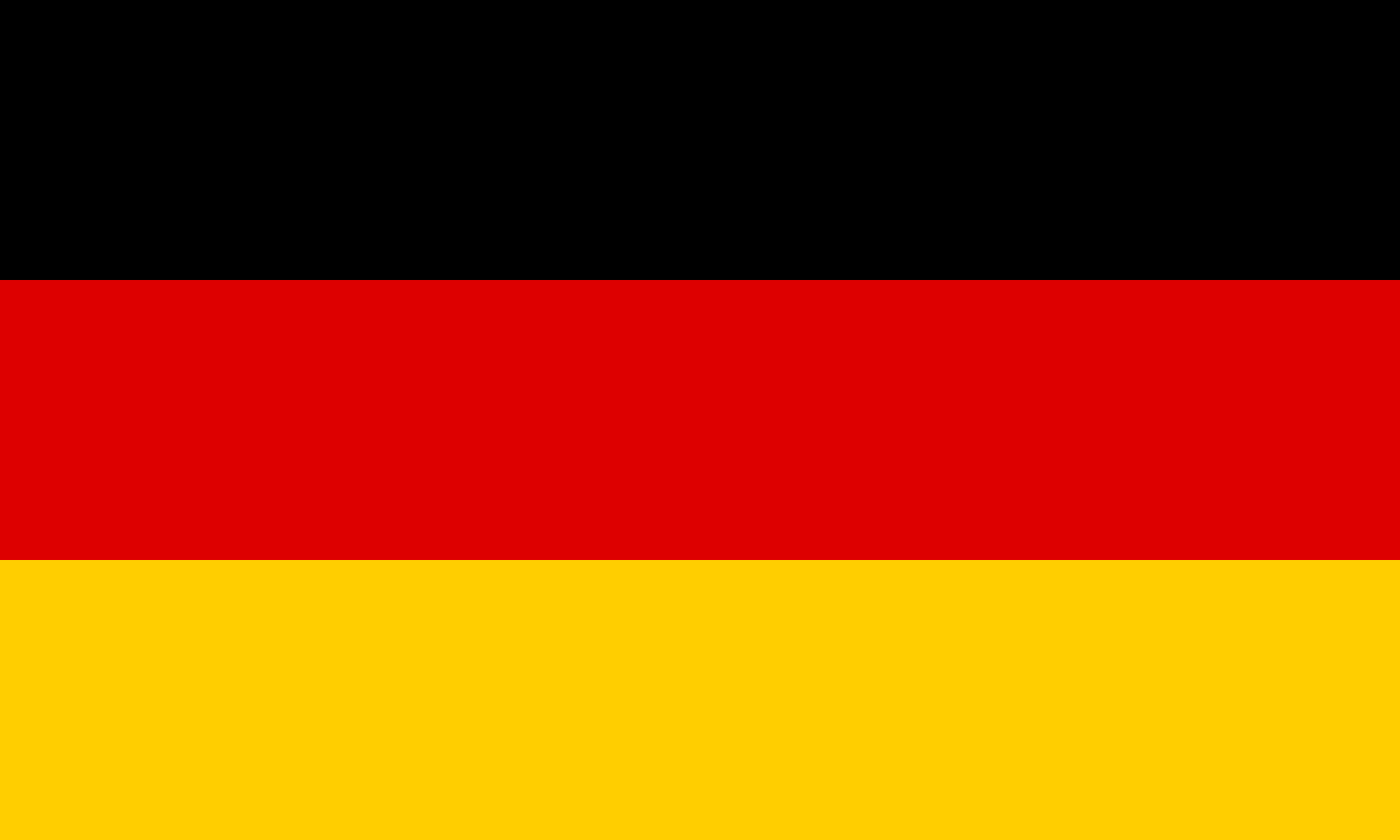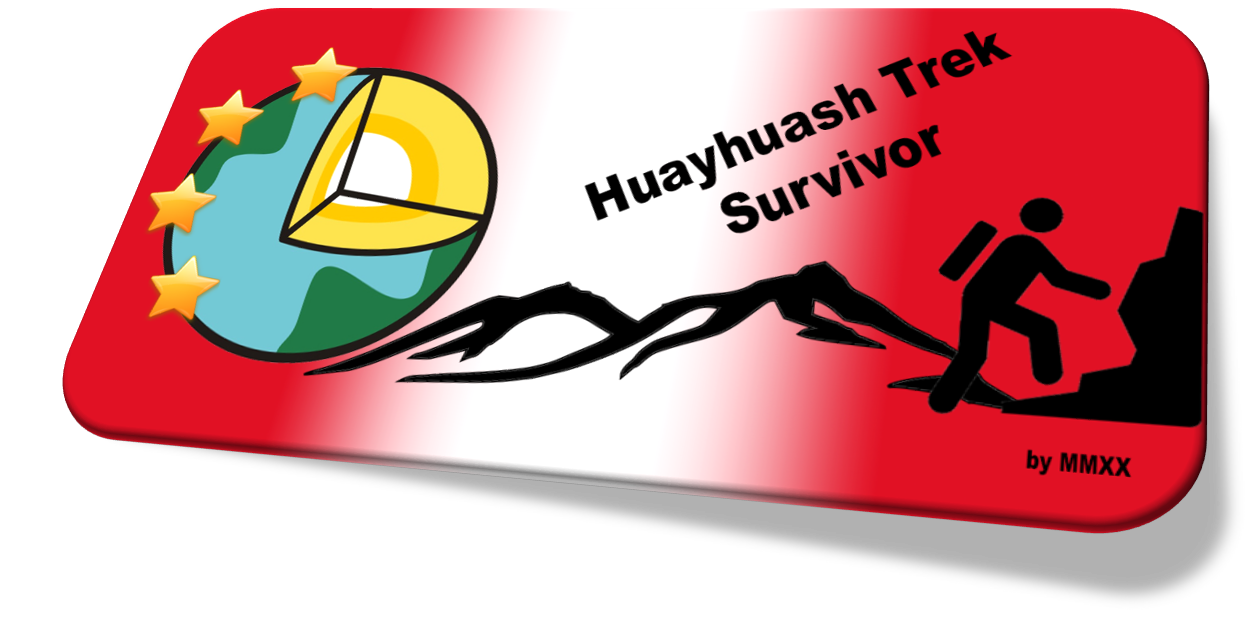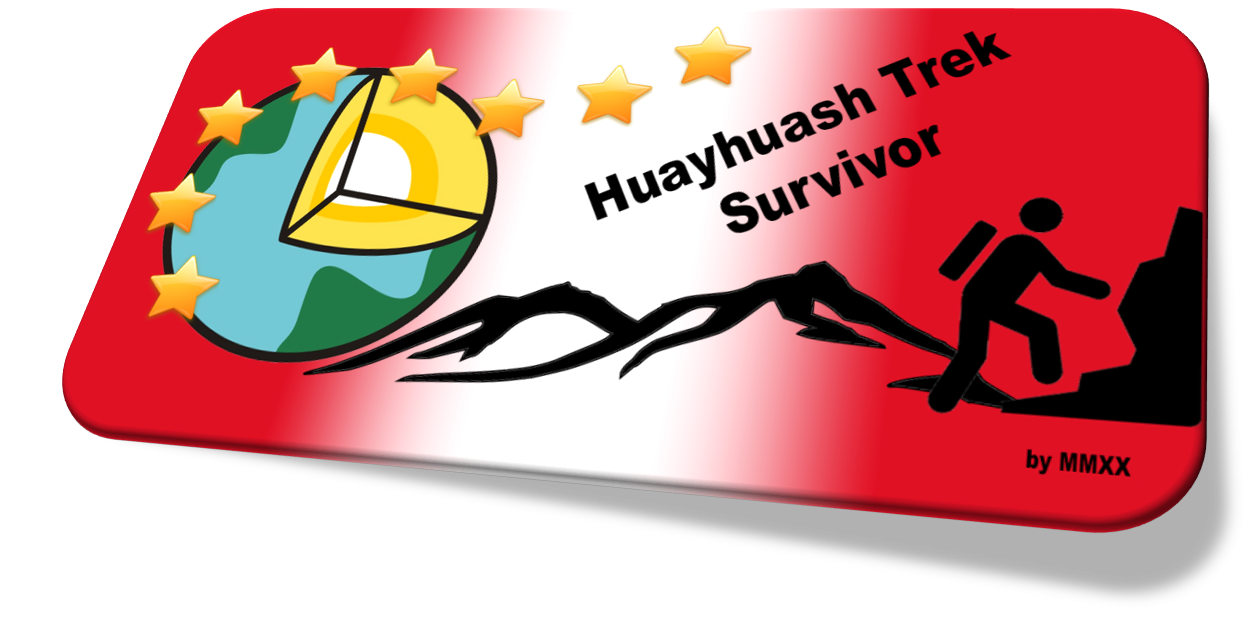
Cordillera Huayhuash
Bienvenido a una caminata de varios días a través de la Cordillera Huayhuash. Esto requiere una cierta aptitud física, así como la aclimatación previa. La alta calificación D / T proviene de la necesaria aclimatación, el aislamiento y la enorme altura en la que se encuentra. Inmediatamente, los problemas con el mal de altura no son infrecuentes y deben ser tomados seriamente.
La caminata por lo general tarda entre 8-10 días y pasa pasa entre 4.600 y 5.000 metros. Los caminos suelen ser buenos para encontrar y con un mapa útil (fuera de línea) debe ser difícil perderse. También hay tours ofrecidos con guía, alojamiento (tienda / saco de dormir) y comida. En mi propia gira, encontré el conocimiento, que las guías transmitían con respecto a la geología, como bastante inadecuado. Por lo tanto, esta serie de Earthcaches, que se supone para transmitir algunos conocimientos adicionales. Tenga en cuenta que para registrar la caché es absolutamente necesario hacer ciertas tareas! No es suficiente estar allí.
La serie consta de los siguientes siete Earthcaches y un Traditional:
Si resuelve satisfactoriamente uno o más cachés, puede incluir el primer banner en su perfil. Si resuelves todo, puedes incluir el segundo banner. Los banners y el código se pueden encontrar al final de la página.
Fundamentos Geológicos

La Cordillera Huayhuash es una subregión de la Cordillera Occidental, creada por subducción de la placa de Nazca bajo la placa sudamericana. Allí por 6 picos de más de 6.000 metros y aún más de 5.000 metros llegó a la existencia. Este levantamiento comenzó hace 90 millones de años, lo que hace que esta cordillera sea bastante joven.
El área está compuesta principalmente de piedra caliza de la Formación Jumasha, complementada con arenisca y pizarra. Estas rocas sedimentarias fueron creadas como un depósito en el mar. Se desarrollan dos fases principales de deformación / convolución que deforman y desplazan la estratificación.
La piedra caliza es una roca sedimentaria biogénica, que generalmente es producida por microorganismos, corales y otras criaturas productoras de cal. Los depósitos de cal de estos organismos, con el tiempo se convierten en piedra caliza. Debido a su estructura química, la caliza generalmente reacciona violentamente con los ácidos.
Tarea
Siga este procedimiento:
- ¡Lea el Earthcache y las preguntas!
- Vaya al lugar y busque respuestas.
- Envíame las respuestas.
- Posteriormente puede iniciar sesión inmediatamente.
Por favor, hágalo en este orden. :-)
- Mira a tu alrededor, ¿cuál es el color de la roca?
- Mira la roca, ¿puedes encontrar fósiles?
- La formación de la formación tuvo lugar en el mar, ¿cuál fue la diferencia entre las rocas en los últimos 90 millones de años (en su punto de vista)? Para mantenerlo simple, partimos de un nivel de 0 metros.
- ¿Qué significa esto para la velocidad de aceleración? ¿Cuántos milímetros al año tienen las montañas crecidas en promedio?

Cordillera Huayhuash
Welcome to a multi-day hike through the Cordillera Huayhuash. This requires a certain physical fitness as well as previous acclimatization. The high D / T rating comes from the necessary acclimatization, the seclusion and the enormous height in which you are located. Immediately, problems with altitude sickness are not uncommon and should be taken seriously.
The hike usually takes between 8-10 days and passes passes between 4,600 and 5,000 meters. The paths are usually good to find and with a useful (offline) map it should be difficult to get lost. There are also tours offered with guide, accommodation (tent / sleeping bag) and food. In my own tour, I found the knowledge, which the guides conveyed with regard to the geology, as rather inadequate. Therefore, this series of Earthcaches, which is supposed to convey some additional knowledge. Please note that in order to log the cache it is absolutely necessary to do certain tasks! It is not enough to be there.
The series consists of the following seven Earthcaches and one Traditional:
If you successfully solve one or more caches, you can include the first banner in your profile. If you solve all, you can include the second banner. The banners and the code can be found at the end of the page.
Geological basics

The Cordillera Huayhuash is a subregion of the Cordillera Occidental, which was created by subduction of the Nazca plate under the South American plate. There by 6 peaks higher than 6,000 meters and still more higher than 5,000 meters came to existence. This uplift began 90 million years ago, which makes this mountain range rather young.
The area is composed mainly of limestone of the Jumasha Formation, supplemented by sandstone and slate. This sedimentary rocks were created as a deposit in the sea. Two main deformation / convolution phases are developed which deform and shift the stratification.
Limestone is a biogenic sedimentary rock, which is usually produced by microorganisms, corals and other lime-producing creatures. The lime deposits of these organisms, in time become limestone. Due to its chemical structure, limestone usually reacts violently with acids.
Task
Please follow this procedure:
- Read the Earthcache and the questions!
- Go to the place and look for answers.
- Send me the answers.
- Afterwards you can immediately log.
Please do it in this order. ;-)
- Look around, what is the color of the rock?
- Look at the rock, can you find fossils?
- The formation of the formation took place in the sea, what was the difference between the rocks in the last 90 million years (at your point of view)? To keep it simple, we start from a level of 0 meters.
- What does this mean for the acceleration rate? How many millimeters a year has the mountains grown on average?

Cordillera Huayhuash
Willkommen auf einer mehrtägigen Wanderung durch die Cordillera Huayhuash. Diese setzt eine gewisse körperliche Fitness sowie vorherige Akklimatisation voraus. Die hohe D/T Wertung kommt von der nötigen Akklimatisierung, der Abgeschiedenheit und der enormen Höhe, in der ihr euch befindet. Gleich vorweg, Probleme mit der Höhenkrankheit sind nicht selten und sollten ernst genommen werden.
Die Wanderung dauert normalerweise zwischen 8-10 Tage und überschreitet Pässe zwischen 4.600 und 5.000 Metern. Die Wege sind in der Regel gut zu finden und mit einer brauchbaren (offline-)Karte sollte es schwer werden, sich zu verirren. Es werden auch Touren angeboten mit Guide, Unterkunft (Zelt/Schlafsack) und Essen. In meiner eigenen Tour empfand ich das Wissen, welches die Guides vermittelten in Bezug auf die Geologie, als eher unzureichend. Daher diese Serie von Earthcaches, die etwas zusätzliches Wissen vermitteln soll. Bitte beachte dabei, dass es durchaus nötig ist, ein den spezifischen Stellen Aufgaben zu erfüllen! Es reicht in der Regel nicht, nur da gewesen zu sein.
Die Serie besteht aus den folgenden sieben Earthcaches und einem Tradi:
Wer erfolgreich einen oder mehrere Caches löst, kann den ersten Banner in sein Profil einbinden, wer alle löst, kann den zweiten Banner einbinden. Die Banner und der Code sind am Ende der Seite zu finden.
Geologische Grundlage
 Die Cordillera Huayhuash ist eine Teilregion der Cordillera Occidental, welche durch Subduktion der Nazca Platte unter die südamerikanische Platte entstand. Dabei entstanden in der Cordillera Huayhuash 6 Gipfel, die höher als 6.000 Meter sind und noch viele mehr über 5.000 Meter. Diese Aufschiebung begann vor 90 Millionen Jahren, womit dieses Gebirge eher als jung zu betrachten ist.
Die Cordillera Huayhuash ist eine Teilregion der Cordillera Occidental, welche durch Subduktion der Nazca Platte unter die südamerikanische Platte entstand. Dabei entstanden in der Cordillera Huayhuash 6 Gipfel, die höher als 6.000 Meter sind und noch viele mehr über 5.000 Meter. Diese Aufschiebung begann vor 90 Millionen Jahren, womit dieses Gebirge eher als jung zu betrachten ist.
Die Gegend setzt sich hauptsächlich aus Kalkstein der Jumasha Formation zusammen, welcher durch Sandstein und Tonschiefer ergänzt wird. Dieses Sedimentgestein entstand als Ablagerung im Meer. Es wird von zwei Hauptdeformations- / Faltungsphasen ausgegangen, welche die Schichtung verformend und verschoben haben.
Kalkstein ist ein biogenes Sedimentgestein, was in der Regel durch Mikroorganismen, Korallen und anderen Kalk produzierenden Lebewesen hergestellt wird. Dabei lagern selbige den Kalk ab, der mit der Zeit zu Kalkstein verwächst. Aufgrund seines chemischen Aufbaus reagiert Kalkstein in der Regel heftig mit Säuren.
Fragen
Bitte wie folgt Vorgehen:
- Lese den Earthcache und die Fragen!
- Gehen zum Ort und suche nach den Antworten.
- Schicke mir die Antworten
- Im Anschluss kann direkt geloggt werden.
Bitte in dieser Reihenfolge ;-)
- Schau dich um, welche Farbe hat das Gestein?
- Betrachte das Gestein, kannst du Fossilien finden?
- Die Entstehung der Formation fand im Meer statt, welchen Höhen unterschied hat das Gestein in den letzten 90 Millionen Jahren zurückgelegt (an deinem Standpunkt)? Um es einfach zu halten, gehen wir von einem Start auf 0 Metern aus.
- Was bedeutet das für die Steigrate? Wie viel Millimeter im Jahr ist das Gebirge durchschnittlich gewachsen?
Banner & PDF
4 or more:

<a href="https://coord.info/GC79C75"><img src="https://abload.de/img/echuyhuashminfin1zsk5x.png" alt="Banner Earthcache Huayhuash" width="300" /></a>
all 8:

<a href="https://coord.info/GC79C75"><img src="https://abload.de/img/echuyhuashfin1wzju7.png" alt="Banner Earthcache Huayhuash" width="300" /></a>
|
Alle Geocaches in einer PDF:
 
|
All Geocaches in one PDF:
 
|
Todos los Geocaches en un PDF:
 
|